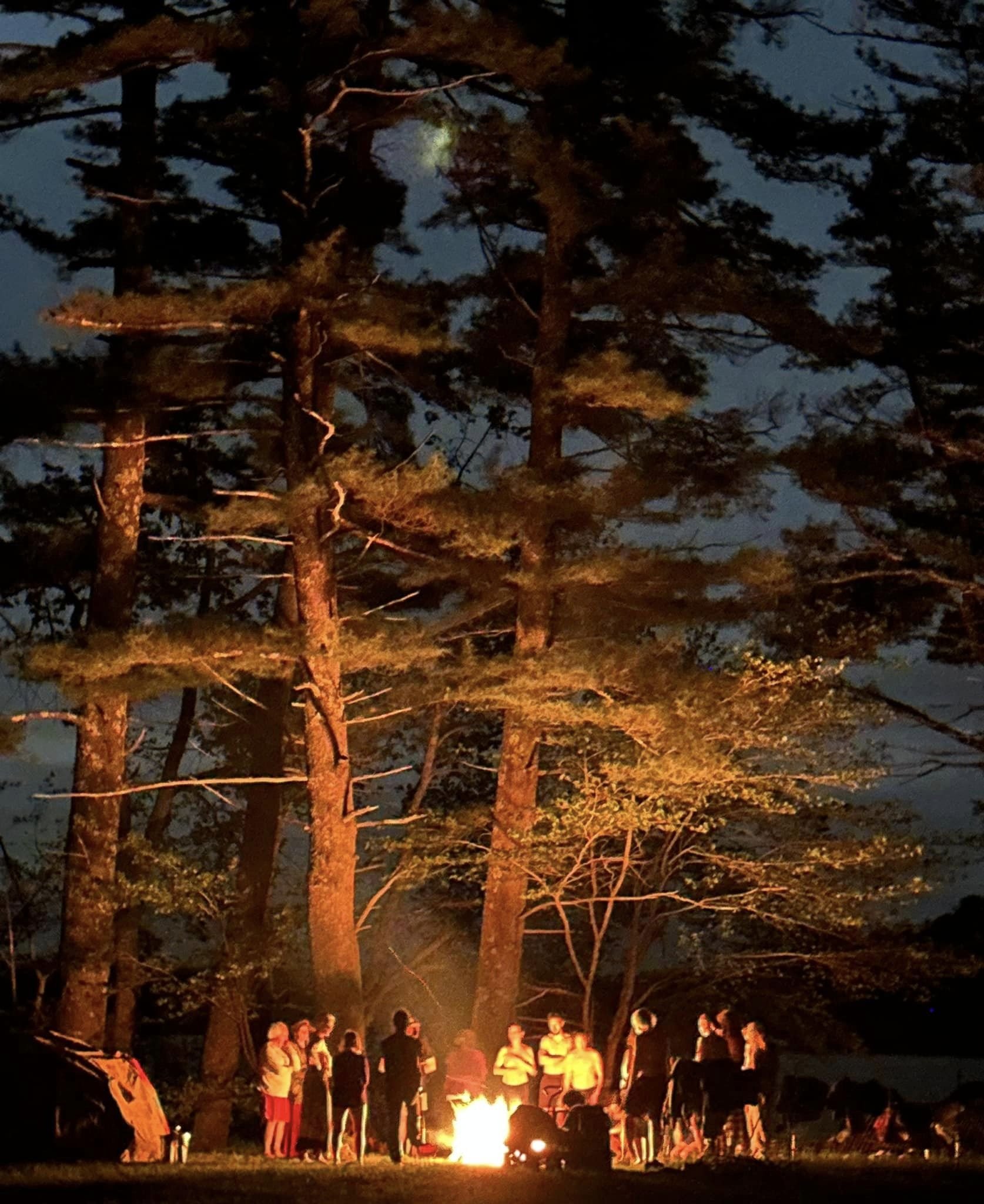History of the Conference
1975
The Great Mother Conference was founded in 1975 by the poet, translator, activist, and wild man Robert Bly. A major theme of the first conference was mother consciousness. Robert believed we needed to explore mother consciousness, and to bring it into balance with what he felt was the predominant culture’s heavy weighting of what he called father consciousness.
In an interview just prior to the first conference in 1975, Robert said, “It's an attempt then to investigate what art would be like, what dance would be like, what poetry would be like, what daily life would be like, if we were living in the mother consciousness, instead of the father or industrial consciousness, in which we all have been living.”
Much of Bly’s 1973 book of poems Sleepers Joining Hands is concerned with this theme, and was influenced by the thinking of C.G. Jung and his students Marie Louise Von-Franz and Erich Neumann (author of the comprehensive book The Great Mother). In the context of America’s war with Vietnam, a focus on the divine feminine was seen as urgent and necessary.
The Conference today
Since its founding, the Conference has expanded to consider a wide variety of poetic, mythological, and fairytale traditions.
“The New Father” made its first appearance in the name of the conference in 1977. In the ’80s and ’90s, there was much discussion among the Conference community about the changes contemporary men were (and are, still) going through, in balance with a continued exploration of mother consciousness and its many expressions and embodiments.
The role of story and myth
In the mid-seventies, Robert Bly, fueled by the work of Marie-Louise Von Franz and others, raised his interest in story to almost the same degree as his passion for poetry.
The Conference that he had founded in 1975 made the acute realization that we didn’t have the stories, the stories had us.
Having the good fortune to encounter Gioia Timpanelli, Connie Martin, and then Michael Meade, Martín Prechtel and eventually in his later years, a young Martin Shaw, Bly gave weight and centrality to story at the conference, especially the fairy tale tradition. These were not recitals from books, these were moments ablaze! Masks, ritual, spontaneity, community involvement: the conference became a place for living myth, not expired recital. In recent years the conference has re-established its reputation as a place for truly experiential encounters with myth — not just as performance, but as a way of thought, a way of beholding.
In his last years at the conference, Robert invited storyteller and mythographer Dr. Martin Shaw to hold the storytelling role. He described Martin as “a true master, one of the very greatest storytellers we have.” Martin carried forward the living tradition of blazing, wildly alive storytelling into the next generations of the conference when Robert could no longer attend.
It is in this tradition that the Conference opens itself to a theme and story each year.
About Robert Bly
Photo by Greg Booth
I’m not sure if anyone quite knew what was coming down the chute on 23rd December, 1926 in western Minnesota, the day Robert Bly was born. There is an old gnostic secret that on the day of your birth, your mother gives birth to a wild twin that is hurled out of the window to fend for itself in some strange part of the earth. It is the business of being a full human being to come back into the presence of that figure, a figure “lonely in his whole body” for you. It’s no exaggeration to claim Bly showed absolute fidelity in his quest to track down and then court his wild twin.
His courting has not just been displayed in his many awards, his fame, his outrageous bursts of courage and genius under fire, but also in a hundred quieter modes: his years as a young man in New York, as a young writer isolated and alone, or his persistence in taking on American poetry’s “wrong turn” whilst also raising a family on a poet’s wages. I think of him standing under a hundred thousand stars scribbling sonnets on his rifle license in deep snow. His body has been tuned to profound failure as well as dizzying praise. It gives the man heft.
Those of us lucky enough to ride alongside him have the horror stories as well as the love stories, and that is absolutely proper. He wouldn’t have it any other way. But few lack a moment where he leaned in with characteristic warmth and praised, challenged, and generally provoked our sense of just what we could do in this world. He relentlessly exemplified the capacity to deepen your life. And without naivety. He never said it would come without consequence.
For most of us at the conference, he was the single greatest human teacher we will encounter.
Absolutely fallible, gutsy, risk-taker in extremis, prone to sustained and positively supernatural bursts of creative fire, his legacy is everywhere. His challenge is everywhere. It is deep evidence of his stamina and generosity that over fifty years on, the Great Mother Conference continues to thrive and bend its head to the skill of making beauty. The community that formed around the conference is substantial, a little eccentric, artful, political, funny, and filled with pathos. A little like the man himself.
Gratitude to Martin Shaw for his words. See Robert Bly’s complete bibliography at the Poetry Foundation.



